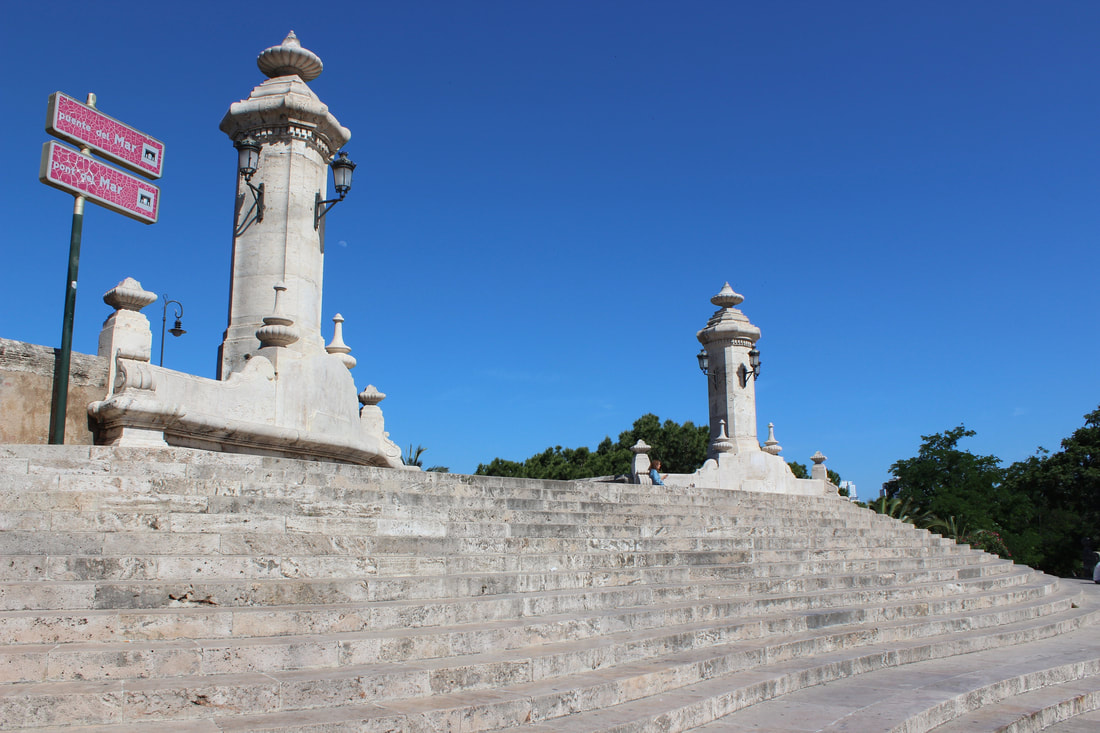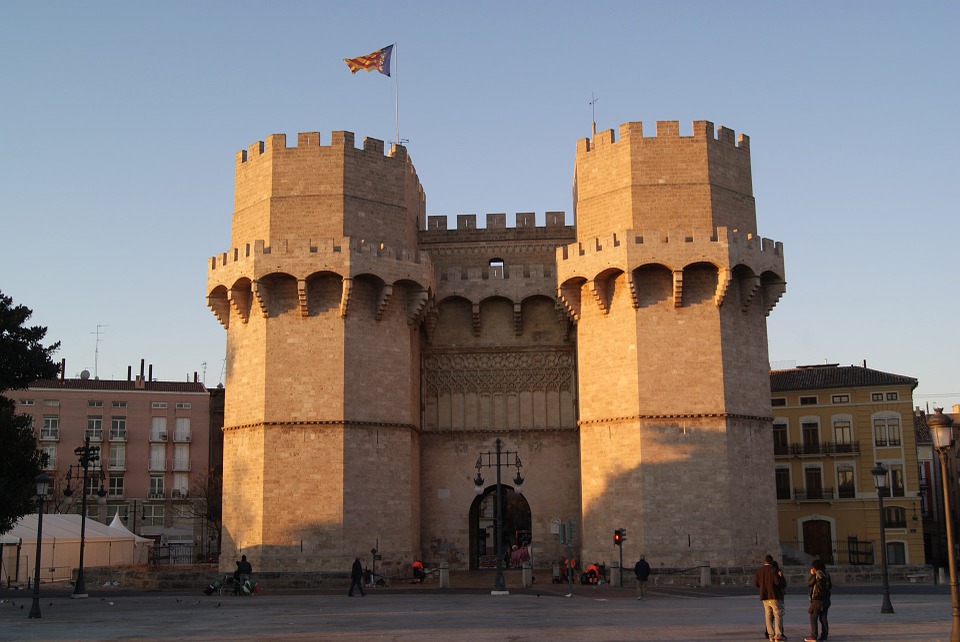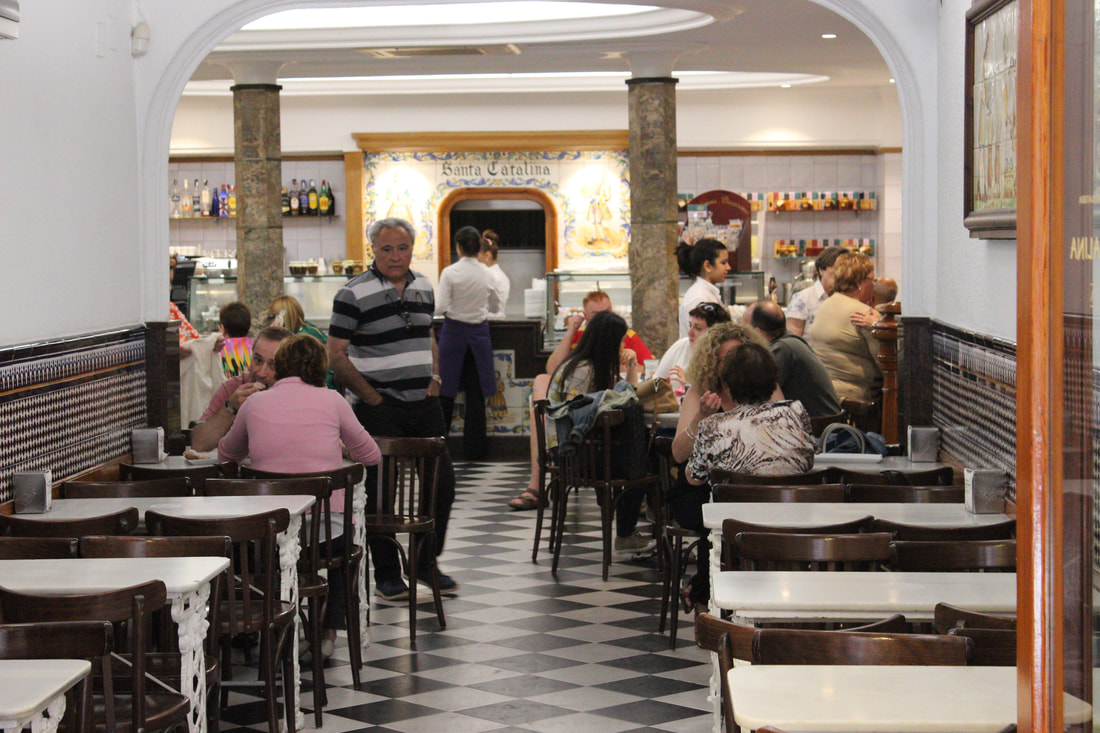This market is not to be missed while in Valencia. Whether you want a coffee, tapas or groceries, Colon Market is an eclectic mix of modern and traditional cuisines. The original structure dates back to 1916 and contains a mix of architectural designs including a hint of Gaudi. Colon Market attracts a variety of tourists and locals alike, some who purchase flowers and others who just want to enjoy a coffee and a smoke. There are over 1,300 stalls inside this these four walls. Next door is Iglesia de los Santos Juanes, a 14th Century church.
Iglesia de los Santos Juanes
This 14-century church is one of the oldest in Valencia. It features a Baroque façade though the original structure is gothic. A fire destroyed the interior in the year 1552, but is still considered a Baroque gem. The church is built upon the site of a 13th Century mosque.
This historic bridge is the gateway between ancient and modern Valencia. Built in 1591, this is one of the oldest still-standing bridges in the city. Before visiting, or returning from, the garden below, admire the two statues, the Virgin Mary and St. Paschal. It’s a magical piece of history that should not be missed. The bridge sits next to Valencia's most prominent park, Jardin del Turia.
This iconic plaza is one of the most visited in Valencia. This charming square dates back to the Roman era. The plaza contains three prominent structures the Cathedral of Santa Maria, the Basílica de la Virgen de los Desamparados, and the Palace of the Generalitat. The elaborate fountain is a photogenic place where Neptune sits in the middle surrounded by eight naked women. The plaza's cafes are popular amongst travelers and locals alike.
La Lonja (THE SILK EXCHANGE)
This building is one of the most famous civil gothic buildings in Europe. The first stone was laid in 1492 and became an important aspect of Valencia's history. Valencia would not be what it is today without the silk trade. Most people have heard of the "Silk Road," which expanded from the Asia to Europe. Valencia was one of Europe's most prestigious places where silk was once sold. Valencia was the perfect location to receive silk from North Africa and distribute it throughout Europe. Where traders once gathered to talk in courtyards is now just a peaceful place to sit and admire the orange trees.
The Del Carmen neighborhood is literally living with history. This thousand year old neighborhood blossomed through time between two walls, Muslim and Christian. The Serrano and Quart Towers are the sole remains of medieval Valencia. The Quart Towers were part of the Christian city walls in the 14th Century, though the towers are from the 15th Century. The monument's exterior features damage spots caused from French seige in 1808.
In case you haven’t eaten enough this trip, the historic Santa Catalina is a historic café that is “Home of two Centuries of traditions.” This café and bakery features countless traditional treats and horchata, a healthy, energizing and digestible beverage composed of Tiger nuts. The nuts originate from Egypt and Valencian’s mix it with sugar and milk to concoct a nutrient-rich “iced” beverage that locals eat with fartons. The idea originates from the 8th and 13th Century Muslim rule in Spain. Besides pumping your cells full of Vitamin C, E, calcium and iron, admire the Spanish tile that glimpses into Spanish history.
Known as one of the best churches in Valencia, this Gothic-style Catholic church features an ornate baroque interior with ceiling frescoes. Some say the artwork inside is the Valencian “Sistine Chapel” due to it’s grand scale and magnificence. This church erected in 1242 and was one of the first 12 Christian churches in the city following the reconquest of Jaume 1 in 1238.
Almoina Archaeological Center
This modern archeological museum features a variety of artifacts including a two-thousand-year-old ancient ruin from the first Roman settlement in Valencia and a Roman bath. The well-preserved remains were discovered between 1985 to 2005. Other noteworthy artifacts include a waterwheel, courtyard pool, baptistery and apse of a church, pottery and other fortifications that once stood during the Islamic period.
What's your favorite historical spot in Valencia? Let's Connect!
This Lemon Tree article is now featured on GPSmyCity. To download this article for offline reading or travel directions to the attractions highlighted in this article, go to 12 Must Visit Historical Sites in Valencia, Spain.









 RSS Feed
RSS Feed